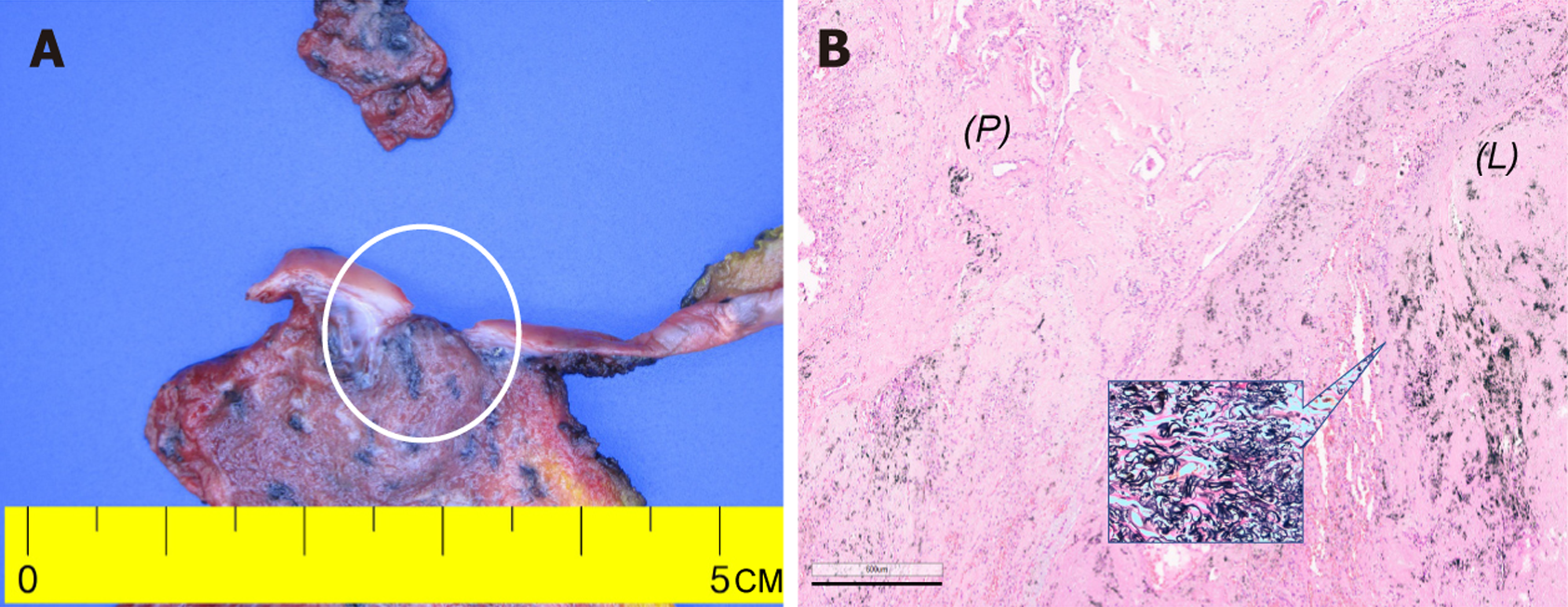Copyright
©The Author(s) 2025.
World J Clin Cases. Nov 16, 2025; 13(32): 111879
Published online Nov 16, 2025. doi: 10.12998/wjcc.v13.i32.111879
Published online Nov 16, 2025. doi: 10.12998/wjcc.v13.i32.111879
Figure 1 Imaging results.
A and B: Chest computed tomography demonstrated left upper lobe subpleural consolidation with pleural thickening and associated pneumothorax. Axial chest computed tomography showed subpleural consolidation (asterisks) and pleural thickening in the left upper lobe (A). Coronal chest computed tomography confirmed subpleural consolidation (asterisks) with adjacent pneumothorax (B); C: 18F-fluorodeoxyglucose positron emission tomography/computed tomography. Moderate fluorodeoxyglucose uptake (maximum standardized uptake value = 3.2) was observed in the left upper lobe (arrows), suggesting malignancy.
Figure 2 Gross and histopathology of the resected left upper lobe consistent with pleuroparenchymal fibroelastosis.
A: Gross specimen with diffuse visceral pleural thickening and a firm gray to black subpleural lesion (white circle) corresponding to the radiological abnormality, scale: Centimeter ruler provided; B: Hematoxylin and eosin staining (× 40 magnification) showed dense fibroelastic thickening of the visceral pleura extending into the adjacent subpleural lung parenchyma with minimal inflammation and no malignant features, inset: Elastic Van Gieson staining (× 100 magnification) highlighted abundant elastic fiber deposition within the pleura and subpleural alveolar septa, consistent with pleuroparenchymal fibroelastosis (scale bar: 600 μm). L: Lung parenchyma; P: Pleura.
- Citation: Jung HS, Kim HJ, Kim KW. Early pleuroparenchymal fibroelastosis mimicking lung malignancy: A case report. World J Clin Cases 2025; 13(32): 111879
- URL: https://www.wjgnet.com/2307-8960/full/v13/i32/111879.htm
- DOI: https://dx.doi.org/10.12998/wjcc.v13.i32.111879














